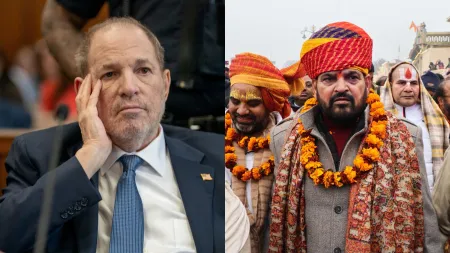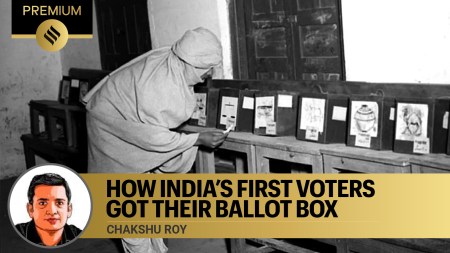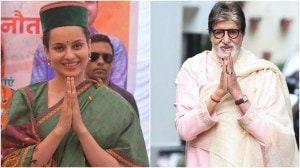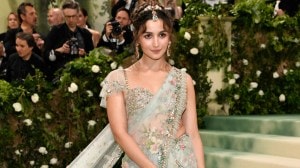- India
- International
Marilyn Monroe, the rising star who called out Hollywood’s ‘wolves’, is not the ‘Blonde’ of Netflix’s cyclical tale of sex and tragedy
Marilyn Monroe is one of Hollywood’s biggest phenomenons, but the reasons she became one have been caricatured and forgotten.
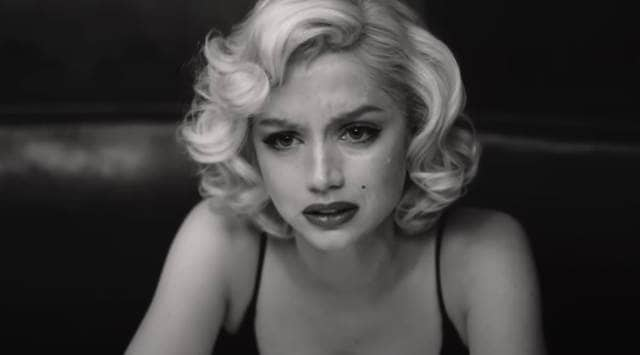 Blonde, the Marilyn Monroe film, barely skims the life of the Hollywood icon (Photo: Netflix)
Blonde, the Marilyn Monroe film, barely skims the life of the Hollywood icon (Photo: Netflix)Marilyn Monroe had once famously said, “Don’t make me a joke, please. I don’t mind making jokes, but I don’t want to be one.” Unfortunately, even there, no one followed her wishes.
Netflix’s latest film Blonde sets out to do exactly what it attempts to vilify, the reduction of Marilyn Monroe — a golden Hollywood phenomenon — to just sex and tragedy. It is a grotesque resurrection of Monroe, just to dehumanise her repeatedly, obliterating other aspects of her personality and life. It’s distinctly disturbing to watch, as it feels akin to torture pornography. The film is a cycle of sex, rape, abortion and explosion of instability, stripping Monroe of her agency, as she craves approval from the men in her life — in the hope that they will become a father figure to her. In short, Blonde seems to revel in reducing Monroe to a glamorous victim.
In an attempt to ‘fictionalise’ her life, Blonde becomes a vehicle to sell all the hyped and salacious controversies surrounding the star. It is so entirely graphic in the attempt to be ‘artsy’ that it just cashed in anything that will produce shock value under the garb of being realistic, a sickening and exhaustive justification. It’s just mostly the women who are ill-treated, pawned, shamed with little or no agency in such shows or films from House of the Dragon to Blonde.
Blonde zooms in on Monroe’s fraying sanity and excessively emphasises her body, but rarely portrays any other side to her, least of all her mind. The film, based on the book by the same name, completely misses the idea that Monroe was so much more. There are several breaking points in this fictionalized fever dream, one of them being the actual journey through her cervix as she gets an abortion done, and the iconic dress being blown up during the shooting of Seven Year Itch. There are repeated shots of just the focus on the private parts of her body, while hungry men keep cheering, and finally, an extensive scene of performing oral sex. It’s agonising to watch Marilyn Monroe being abused, exploited by Hollywood machinery again as fabulous as Ana De Armas is, in portraying her vulnerability.
Before MeToo
We know the murkiness of Hollywood and she was luridly objectified, and the way she was treated as a ‘sexpot’. Biographers on Monroe for years have written books on the rumours surrounding her stardom and allegedly sleeping her way to the top. Very few have actually tried unpacking the phenomenon and the influence that she was, instead she continued to be sexualised and slotted as the infamous ‘Dumb Blonde’. It’s a narrative that has been perpetuated for years, and Blonde continued the tradition. The film completely and conveniently forgets to delve into the numerous sides to Monroe’s personality. We see her being abused by men, but never the article that she wrote to call them out. It was Monroe who exposed Hollywood’s nefarious environment for women in her article, ‘Wolves I Have Known’ in 1953—-sixty years before #MeToo shook Hollywood. She was still a rising star, with just a handful of films, and yet, she called out the sleazy men that she had encountered in Hollywood. She had written, “Some are sinister, others are just good-time Charlies trying to get something for nothing and others make a game of it.” There were many wolves that Monroe had to fight—the ones who would send her gifts in exchange for sexual favours, and in some cases when she refused, she was dropped from the contract.

It was a constant struggle with herself, and Monroe acknowledged that she did not evade the casting couch completely. In her own unfinished autobiography, My Story, Monroe wrote, “You know that when a producer calls an actress into his office to discuss a script, that isn’t all he has in mind. I’ve slept with producers. I’d be a liar if I said I didn’t.” It’s not as if she was if she was a pioneer for women’s rights—-but she was still ahead of her time.
Yet, she was concerned about other women, having been fully aware of the ugliness of Hollywood. She also warned other aspiring actresses in the industry about the grime and dirt, as recalled by Joan Collins during the British talk show, This Morning. “She said, ‘Watch out for the wolves in Hollywood, honey … if they don’t get what they want, they’ll drop your contract.’” But we don’t see this in Blonde. No, we just see a broken, battered woman trying to frantically grapple with life, disturbed relationships, depression and finally a suicide where she is ‘reunited’ with her father figure.
The many sides to Monroe
Sarah Churchwell — one of the few biographers who actually did their homework on Marilyn Monroe, delved deep into the real personality of Monroe in her 2004 book ‘The Many Lives Of Marilyn Monroe’. She worked at debunking numerous myths surrounding Monroe, starting with fragility and the image of a ‘dumb blonde’. There is a far different image of Monroe that she creates, gathered from interviews of close friends, newspaper reports and interviews. Monroe’s life was a struggle, yes, but neither was she constantly so hysterical and at the mercy of men, and depression as portrayed in Blonde.
In fact, she did have extraordinary wit and an acidic sense of humour. One of the most prominent examples being, when a journalist asked her if she thought Arthur Miller had married her because he was looking for a muse. She said she’d only answer on condition that he printed her answer in its entirety, with no editing. He agreed, and she said: “No comment.” That’s the sign of a woman with sharp and brazen wit. Another example being her ability to turn tables on an interviewer, when she was asked ‘if she was a new Marilyn’. She coolly answered, “I’m the same person. But this is a different suit.”
Constantly misconstrued as the ‘dumb blonde’ owing to the roles she played with such aplomb, director Billie Wilder praised her for this particular quality and was known to have said that she had ‘absolute genius as a comic actress’. She was a far cry from being ‘dumb’ as she portrayed—but only few got that.
In fact, Arthur Miller himself wrote an article in the 1958 edition of the Life Magazine, addressing her sense of humour, and vivaciousness. Several portraits of Marilyn Monroe accompanied the article titled ‘My Life Marilyn’, and Miller expressed how there was some unusual wit in each portrait. “As in life so in these pictures — she salutes fantasy from the shore of the real until there comes a moment when she carries us, reality and all, into the dream with her, and we are grateful. Her wit here consists of her absolute commitment to two ordinarily irreconcilable opposites — the real feminine and the man’s fantasy of femininity. We know she knows the difference in these pictures, but is refusing to concede that there is any contradiction, and it is serious and funny at the same time,” he had written in the typescript. He paints an ethereal vision of Marilyn Monroe, almost stunning—and yet vividly real—a taste of what she actually was.
Fighting for LGTBQ rights
Monroe was so much more than the bombshell that she was always referred to. Blonde never refers to her politics or even her stance on LGTBQ rights—and we’re talking about a world of the 1950’s and 1960s. She was once quoted saying, “When two people love each other, who cares what colour or flavour or religion they are? It’s two human beings. It’s beautiful. Love is beautiful. It’s that simple.” She supported people who were battling with their own sexuality, “People who aren’t fit to open the door for him, sneer at his homosexuality. What do they know about it? Labels. People love putting labels on each other. Then they feel safe,” Monroe had said, referring to Montgomery Clift who was harassed for coming out of the closet. “People tried making me into a lesbian. I laughed. No sex is wrong if there is love in it.”
But Blonde captures none of this fire, wit and nuance. It just panders to the over-sexed, distorted image of Marilyn Monroe that has continued to circulate over the decades. Blonde shows her spiralling into madness, an unstable mother without a child. Monroe continues to be resurrected, just to be abused and exploited again. She would just be left alone, because it’s uncertain whether any current production house would ever capture her iridescence.
Click for more updates and latest Hollywood News along with Bollywood and Entertainment updates. Also get latest news and top headlines from India and around the World at The Indian Express.
Photos
May 07: Latest News
- 01
- 02
- 03
- 04
- 05





